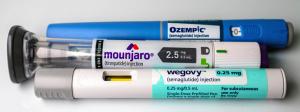Enhancing Outpatient Hemophilia Care May Improve Health Outcomes and Costs
Prospective data from patients attending a rural practice in West Virginia between 2016 and 2023 show that a quality improvement program that followed guideline recommendations and was tailored to specific patient needs reduced preventable bleeds and lowered costs.
Improving outpatient care for bleeding disorders, such as
Prospective data from patients attending a rural practice in West Virginia between 2016 and 2023 show that a quality improvement program that followed guideline recommendations and was tailored to specific patient needs reduced preventable bleeds and lowered costs.
Improvements coincided with drastically lower costs, dropping by 94.5%—from $11,800 to $640—per patient per year. This reduction, explained the researchers, yielded an annual cost savings of over $980,000.
“Improving patient outcomes and reducing institutional costs for patients with bleeding disorders can be attained with goal-directed best practices–based outpatient management,” wrote the researchers of their findings, published in
Preventable bleeds were considered by the researchers as those resulting from patients with severe hemophilia not adhering to or using factor, patients with severe hemophilia who had factor but needed treatment guidance, patients without severe hemophilia who were unable to treat themselves, and from difficulty with intravenous access.
Preventable hospitalizations and visits to the emergency room (PHER) were cut by 85.4% across the 88 patients, risk of hospitalization was reduced by 88.4%, and risk of ER visits was reduced by 83.2%. All reductions met prespecified outcome criteria for intervention success, according to the researchers, who noted that the analysis of hospitalizations alone and ED visits alone were post hoc modifications made to the PHER outcome.
The group noted that these best practices may already be implemented in certain centers or unattainable in others due to low resource availability.
“The project did encounter obstacles beyond time utilization. Some patients were unable to communicate via the electronic portal due to medical comorbidity, poverty, or technological limitations,” detailed the researchers. “Although we obtained a direct phone line for patients to access our hemophilia specialty care nurse and improve communication (as strongly desired by patients and caregivers), this occurred the month the intervention closed and, as a result, would not have influenced the outcomes reported here. Our project addressed many contributors to bleeds simultaneously (prophylaxis, communication, and adherence barriers), and it was not possible to objectively determine the efficacy of each component. However, in our opinion, the primary driver of reduced preventable bleeds was the expanded use of emicizumab prophylaxis.”
All 19 patients receiving emicizumab (Hemlibra; Genentech) reported improved ease of use compared with clotting factor concentrate, and 18 reported improved bleeding frequency. Recently published data on long-term exposure to emicizumab across 2 phase 3 studies showed prolonged efficacy and safety with the treatment.2
Patients using prophylaxis with emicizumab in the current study cited the
By the end of the study period, all patients with severe hemophilia were receiving some type of prophylaxis, up from 58.8% at the start of the study. The researchers credited the increase in prophylaxis use to their addressing of individual barriers to use.
There were 135 urgent management events that occurred throughout the study, most of which were attributable to patients with severe disease who did not adhere to prophylaxis. The most common reasons for management were procedures (43.2%) and bleeding (28.4%).
Due to the study design, the group was unable to quantify annual bleeding rates at the patient level.
References
1. Merrill SA, Webber SE, Merril LJ, Shmookler AD. Improved outcomes and cost savings for patients with bleeding disorders: a quality improvement project. Res Pract Thromb Haemost. 2024;8(3):102401. doi:10.1016/j.rpth.2024.102401
2. Mahlangu J, Jiménez-Yuste V, Ventriglia G, et al. Long-term outcomes with emicizumab in hemophilia A without inhibitors: results from the HAVEN 3 and 4 studies. Res Pract Thromb Haemost. 2024;8(2):102364. doi:10.1016/j.rpth.2024.102364
Newsletter
Stay ahead of policy, cost, and value—subscribe to AJMC for expert insights at the intersection of clinical care and health economics.
Related Articles
 Metabolic Issues More Common in Patients With HIV
Metabolic Issues More Common in Patients With HIVSeptember 18th 2025
 Barriers to Gender-Affirming Surgery Persist Despite High Satisfaction Rate
Barriers to Gender-Affirming Surgery Persist Despite High Satisfaction RateSeptember 18th 2025
 Eating Behaviors May Predict GLP-1 Therapy Success in Type 2 Diabetes
Eating Behaviors May Predict GLP-1 Therapy Success in Type 2 DiabetesSeptember 18th 2025





























































